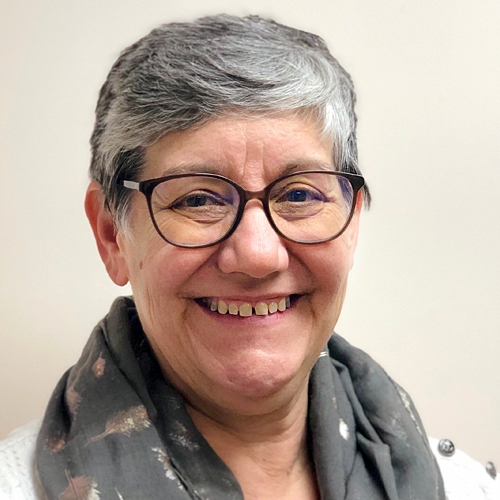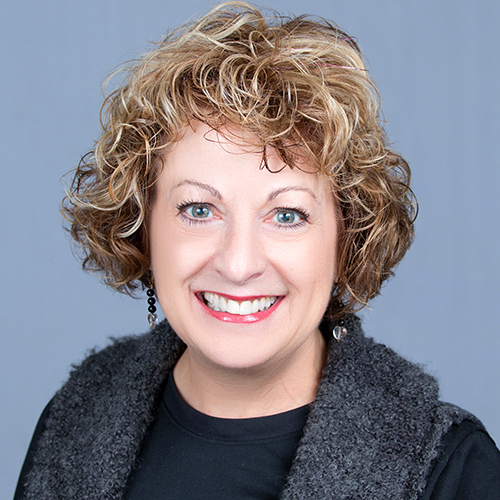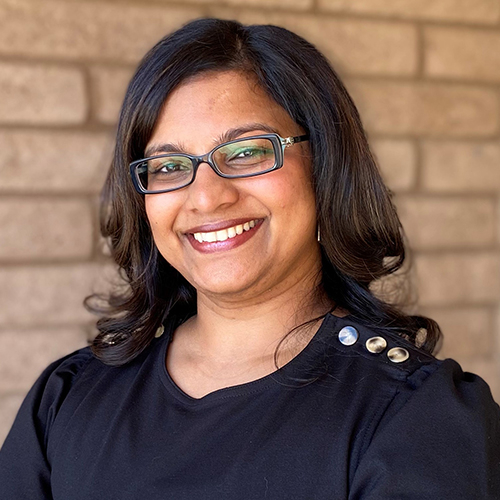GOLD Learning Tongue-Tie Online Symposium 2023 - Day 2 Advancing Our Understanding
The Day 2 Lecture Pack of the GOLD Learning Tongue-Tie Online Symposium 2023 includes topics on Advancing Our Understanding! Dive deeper into the topic of tongue-tie with a look at the vagus nerve and its impact, trauma informed and family centered care, the impact of tongue-tie on swallowing and the implications for starting solids, a closer look at the anatomy and physiology of the lingual frenulum and complex case studies and how to determine what to tackle first.
All presentations are now online.
This program is approved for 5 L-CERPs, 5 CME Prescribed credits, 5 Dietetic CPEUs and qualifies for ASHA PDHs.
Learn more about the Day 1 Lecture Pack of the Tongue-Tie Online Symposium 2023 - Fundamental Skills. Refine your fundamental skills by learning about how to assess for tongue-tie and identify differential diagnoses, the importance of anticipatory guidance and collaborative care, post frenotomy wound management and bodily autonomy, activities for supporting optimal oral function and creating a clinical care plan that works for the family.
Group Registration: Receive additional discounts when you register a group of 10 or more. Contact us at [email protected] to learn more or submit your group.


Justin is a Consultant Paediatrician who has worked in both the UK and Ireland. He has had an interest in Tongue Ties for over 15 years and has created multi-disciplinary pathways of care. He is Medical Director of the National Tongue Tie Centre in County Tipperary, Ireland which he established with Kate Roche, a Chartered Physiotherapist, in 2017. There he and the team provide comprehensive care for infants, children and adults with tethered oral tissues.
1: Describe the normal anatomy of the tongue.
2: Explain how ankyloglossia affects the normal function of the tongue.
3: Describe how to achieve a complete release of ankyloglossia in order to optimise function and why supportive therapies are vital to the outcome.
The management of tongue tie has many approaches. In this presentation we will explore the anatomy and physiology of normal tongue frenulae and that of ankyloglossia. How the structures affect function and how to manage them to optimise function. We will also discuss the problems that can be seen following incomplete release and reattachment. We will also cover complications during surgery and management options.


Dr. Sharon A. Vallone is a graduate of Rutgers University (AB Microbiology 1978) and New York Chiropractic College (1986). She completed her Diplomate in Clinical Chiropractic Pediatrics in 1996 through Palmer College and received her appointment as Fellow in Clinical Chiropractic Pediatrics in 2003. Dr. Vallone has a private practice limited to high risk pregnancies and challenged children in Connecticut and is currently the Chair of the Board of Kentuckiana Children’s Center in Louisville, KY and past Vice Chair of the International Chiropractic Association’s Council Pediatric Council. She is an international speaker, author, and editor of the Journal of Clinical Chiropractic Pediatrics. Sharon brings 33+ years of pediatric chiropractic experience with a primary interest in pregnancy, birth trauma, breastfeeding and problems with infant /toddler neurodevelopment.
Topic: Wondering about “The Wanderer?” The Vagus and Ankyloglossia - [View Abstract]
1: Describe the form and function of the Vagus Nerve (CN X).
2: Explain how the presence of ankyloglossia and it's associated changes in structure and function in the breastfeeding neonate can alter vagal tone.
3: Describe the concomitant implications of ankyloglossia to vagal function and a successful breastfeeding relationship.
Regulation of the autonomic nervous system is critical for the successful breastfeeding relationship of the dyad. This 1 hour lecture will first, review the anatomy and physiology of the Vagus Nerve (Cranial Nerve X) as it might potentially influence breastfeeding. It will then explore the myriad of ways that the presence of ankyloglossia could potentially influence dysregulation of vagal tone resulting in a myriad of complaints often seen in both members of the dyad when the neonate has ankyloglossia.


Kathy Parkes is a sought-after speaker and webinar presenter as well as a published author. She has lived all over the world, settling in San Antonio, Texas after her Air Force husband retired. Kathy is a Registered Nurse with a Masters in Nursing Education and received her International Board Certified Lactation Consultant designation in 1992. Her private practice, Breastfeeding Perspectives, adds to her over 30 years of lactation experiences, which include WIC staff and clients, in-patient hospital work on L&D, postpartum, and NICU, taking a hospital to Baby-Friendly designation, setting up a lactation visitation program for both a home health agency and for the largest birth doula organization in San Antonio, and providing home and office lactation visits for private clients. She specializes in tethered oral tissues (tongue-and-lip ties), milk supply problems, multiples, and preterm/late preterm infants.
On the fun side, Kathy met her husband of 47 years as she was jumping out of the airplane he was flying. (You could say she fell for him!) She loves animals, traveling, and gardening. Most of all, she loves teaching others about breastfeeding.
Topic: How to Start a Private Lactation Practice - [View Abstract]
Topic: I QUIT!! Burnout, compassion fatigue, and self-care for the healthcare professional - [View Abstract]
Topic: Lactation Choices Following Pre-and-perinatal Loss - [View Abstract]
Topic: Powerful Relationships: How Babies (and Parents) Learn To Love - [View Abstract]
1: Name at least two (2) frenotomy assessment scoring tools to use with infants in their practice.
2: Discuss at least three (3) possible effects of ankyloglossia for infants.
3: List at least two (2) comorbidities that are possible in infants with ankyloglossia.
Conservative estimations report that the number of frenotomies globally has tripled in the past 10 years. Breastfeeding/chestfeeding parents seek help on the internet, social media, support groups, lactation consultants, physicians, midwives, and other healthcare professionals and are frequently sent straight to a release provider without the care of the other providers. However, a tongue or lip tie is not always the cause of the feeding problems the dyad is experiencing. This session will provide information on assessment, diagnostic tools, comorbidities, treatments, and complicated case studies to broaden your knowledge about ankyloglossia.


Ramya Kumar is an ASHA certified Speech Language Pathologist specializing in infant and pediatric feeding disorders while practicing in a Level 3 NICU and outpatient settings in Phoenix, AZ. She is a Board Certified Specialist in Swallowing & Swallowing Disorders, Certified Neonatal Therapist, International Board Certified Lactation Consultant, Neonatal Touch & Massage Certified Therapist & has completed the Trauma Informed Professional Certificate. Ramya is an internationally sought out speaker & clinical mentor on the topic of neuroprotective care in the NICU, Pediatric Feeding Disorders and Tethered Oral Tissues. Ramya is passionate about helping families create mealtime success through a whole-body lens. More recently, Ramya has been serving as a NICU Developmental Coordinator championing changes in unit culture, system-wide policy development and supporting transition of NICU families to community based programs. She has also co-founded Arizona NICU Follow-Up Specialists, a community resource supporting NICU grads and their families as they transition from hospital to home.
Topic: Trauma Informed and Family Centered Care! Keeping the Family Unit at the Center of a Tongue-Tie Treatment Model - [View Abstract]
1: List the four components of family centered care.
2: List three ways to apply trauma informed care to support a family who is caring for a child with feeding difficulties.
3: List three challenges that parents face when caring for a baby with tethered oral tissues.
Research repeatedly tells us that families experience significant levels of stress, fear and fatigue when navigating challenges with feeding their infant. These experiences have a significant impact on their well-being, negatively affecting both physical and emotional health. Compound this with the need to navigate information and emotions that surround surgical intervention like tongue tie releases and the subsequent impact on their child’s comfort and pain as well as fear about success after a release is completed. Parental involvement in the care of their infant’s feeding plan is essential for protecting their identity roles, decreasing risk of depression and anxiety, and increasing parent confidence and competence in caring for their child (Obeidat,2009). Health professionals have a crucial role to play in understanding and implementing a trauma informed, family centered care model when planning the timing of a tongue tie release and supporting the family through the journey. This session will highlight the four core concepts of family centered care as well as tenets of trauma informed care and ways to utilize this during the various stages of a tongue tie evaluation. We will also cover strategies to minimize trauma recurrence and empowering parents and caregivers throughout the process.


Dr. Sharon Smart is a dedicated and accomplished Lecturer in the Curtin School of Allied Health. With over a decade of experience, Dr Smart has a proven track record of coordinating and teaching undergraduate and postgraduate units in paediatric speech, language, feeding and swallowing disorders.
Dr. Smart has made significant contributions to the study of infant feeding, swallowing disorders in children, tongue-tie, and paediatric speech and language development. Her passion for translating clinical problems into research topics has improved the lives of countless children and their families.
In addition to her research, Sharon is committed to educating the next generation of health professionals. She takes pride in teaching evidence-based assessment and intervention practices, empowering students and clinicians to become skilled and compassionate practitioners.
Dr. Smart serves as a board member on two organisations: the Australasian Society of Tongue and Lip Tie (ASTLIT) and the International Consortium of Ankylofrenula Professionals (ICAP). As a board member, Sharon contributes her expertise and leadership to help guide these organisations in achieving their missions.
1: Recite current definitions of tongue-tie, incidence, and scope of practice.
2: Describe the anatomy and physiology of swallowing and identify the potential impacts of a restricted lingual frenulum on this process.
3: Explain the typical development of oral motor skills during breastfeeding and transition to solids and describe the impact that tongue-tie can have on the introduction of solid foods, as well as the potential challenges with chewing and swallowing that can arise as a result.
4. List at least 3 signs and symptoms of tongue-tie and its impact on swallowing, breastfeeding, and starting solids in infants and young children.
5. Describe how to conduct a thorough assessment of lingual frenulum appearance and function to diagnose tongue-tie, including the examination of the infant's mouth and feeding patterns, and clinical assessment tools available.
6. Explain non-surgical and surgical treatment options and referral pathways and recognize when referral to another professionals is required for infants and young children with tongue-tie.
Infants and children with tongue-tie can have difficulty swallowing, poor breastfeeding latch, and difficulty transitioning to solid foods. The impact of tongue-tie on these functions can have long-lasting effects on a child's development and well-being. This presentation will include discussion on the anatomy and physiology of swallowing and how it can be impacted by a restricted lingual frenulum. It will include discussion on the typical development of oral motor skills during breastfeeding and transition to solids, and the impact that tongue-tie can contribute to the introduction of solid foods, and challenges with chewing and swallowing. Overall, this presentation will aim to increase your understanding the impact of tongue-tie on feeding and swallowing which is crucial for healthcare professionals working with infants and young children to improve outcomes for both the child and family.
Accreditation
CERPs - Continuing Education Recognition Points
Applicable to IBCLC Lactation Consultants, Certified Lactation Consultants (CLCs), CBEs, CLE, Doulas & Birth Educators. GOLD Conferences has been designated as a Long Term Provider of CERPs by the IBLCE--Approval #CLT114-07. This program is approved for 5 L-CERPs.
IBCLC Detailed Content Outline:
III. Pathology 5/5 presentations
VII. Clinical Skills 1/5 presentations
CMEs - Continuing Medical Education credits for Physicians & Nurses
The AAFP has reviewed GOLD Learning Tongue-Tie Online Symposium 2023, and deemed it acceptable for AAFP credit. Term of approval is from 09/11/2023 to 09/11/2024. Physicians should claim only the credit commensurate with the extent of their participation in the activity. This program is approved for 5 AAFP Prescribed CME credits.
ASHA - Professional Development Hours for Speech-Language Pathologists
According to ASHA, this activity qualifies for 5 PDHs. Activities are accepted as PDHs if they contribute to your professional development and will lead to acquiring and enhancing skills and knowledge required for independent audiology and SLP practice.
Please review ASHA's Acceptable Activities for Professional Development for more information.
Dietetic CPEUs - Continuing Professional Education Units:
Applicable to Dieticians & Nutritionists, this program is approved for 5 Dietetic CPEUs by the Commission on Dietetic Registration - the credentialing agency for the Academy of Nutrition and Dietetics.
If you have already participated in this program, you are not eligible to receive additional credits for viewing it again. Please send us an email to [email protected] if you have any questions.
Tags / Categories
(IBCLC) Clinical Skills, (IBCLC) Education and Communication, (IBCLC) Infant, (IBCLC) Pathology, Bodywork for the Tongue Tied Infant, Breastfeeding the Tongue Tied Infant, Frenotomy & Tongue Tie Treatment, Tongue & Lip Tie Assessment, Tongue-tie, Lip Tie & Structure
How much time do I have to view the presentations?
- The viewing time will be specified for each product. When you purchase multiple items in your cart, the viewing time becomes CUMULATIVE. Ex. Lecture 1= 2 weeks and Lecture Pack 2 = 4 Weeks, you will have a total of 6 weeks viewing time for ALL the presentations made in that purchase.
- Time for viewing the talks begins once you purchase the product. For Live Webinars & Symposiums, the viewing period begins from when the live event takes place. Presentations can be accessed 24/7 and can be viewed as many times as you like during the viewing period.
What are bundled lectures?
- Presentations may be available individually or via a bundled package. Bundled lectures are a set of lectures that have been put together based on a specific category or topic. Some lectures will be available in both individual and lecture form, whereas others will be available only via a bundled lecture pack.
Will there be Handouts?
- YES! Each lecture comes with a PDF handout provided by the Speaker.
Some lectures include a Q&A, what does that mean?
- During our online conferences, presentations that occur live are also followed by a short 15 minute Question & Answer Session. The Speaker addresses questions that were posted by Delegates during the presentation. We include the recording of these Q&A Sessions as a bonus for you.
How can I receive a Certificate?
- If this presentation offers a certificate, once you are done viewing the lecture or the lectures within a bundle, submit your attendance record in order to be able to download your certificate. You'll be able to see which credits are offered for the lecture by hovering over the "Credits Available" link within the "Speakers & Topics" tab.
Professionals that selected this package also viewed

|
|

|









